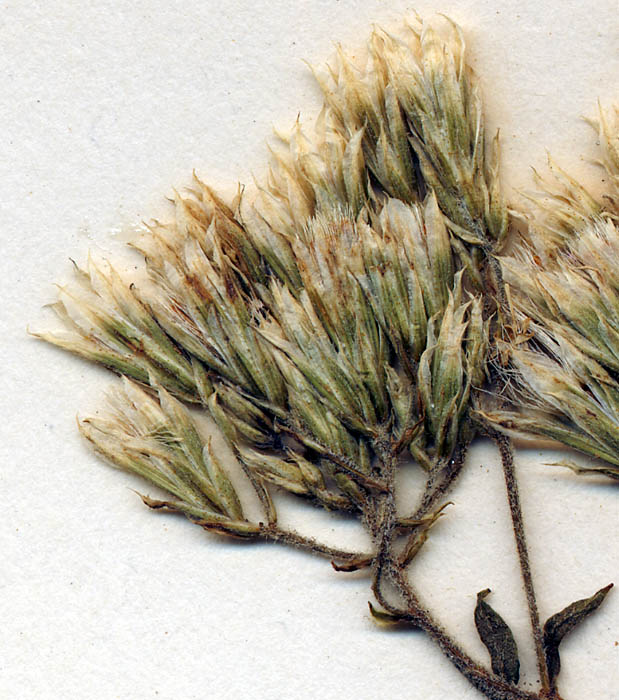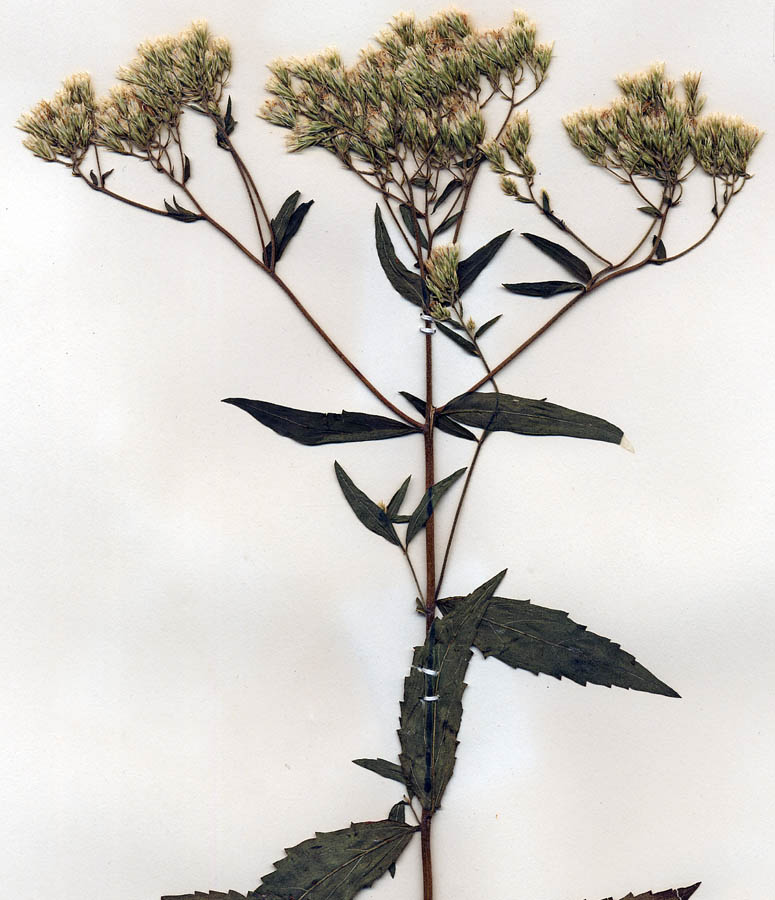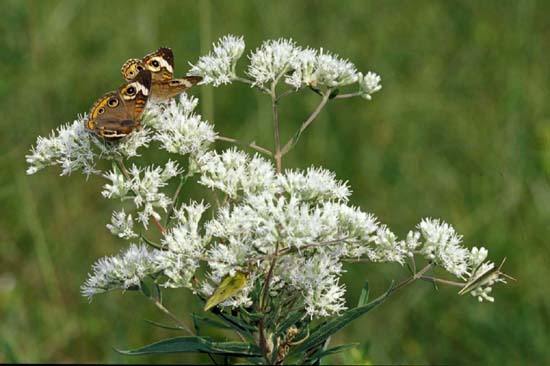Eupatorium album L. var. album
Distinguishing Features: relatively long phyllaries (usually longest 8-9 mm) that have an acuminate, white-colored apex; leaves elliptic to oblanceolate, 3-4 times as long as wide; phyllaries with glands.
Habitat: wide variety of habitats, including acid to sandy, wet to dry, often in pinelands, in both stable and disturbed areas.
Geographic Distribution : apparently widespread, although careful study may show that the diploid phase of the species is restricted to the southeastern U.S. (Florida, Georgia, Alabama) and material assigned to it from other areas is hybrid and apomictic.
Similar Species: Eupatorium petaloideum is very close (and has usually been lumped with E. album var. album or more recently placed as E. album var. petaloideum; Ward 2004), and is separated morphologically by lacking glands on the phyllaries. According to Sullivan (1972), E. petaloideum occurs in upland well drained sites or in rich oak-hickory communities with very fine textured, loamy soil, whereas E. album var. album tends to occur in pine flatwood communities.
Molecular Data : samples of E. album (DNA #s 702, 985, 2005, 2051, 2198) differ in the ITS sequence from all other species by a minimum of 7 bp changes and 1 indel (compared to E. petaloideum).


